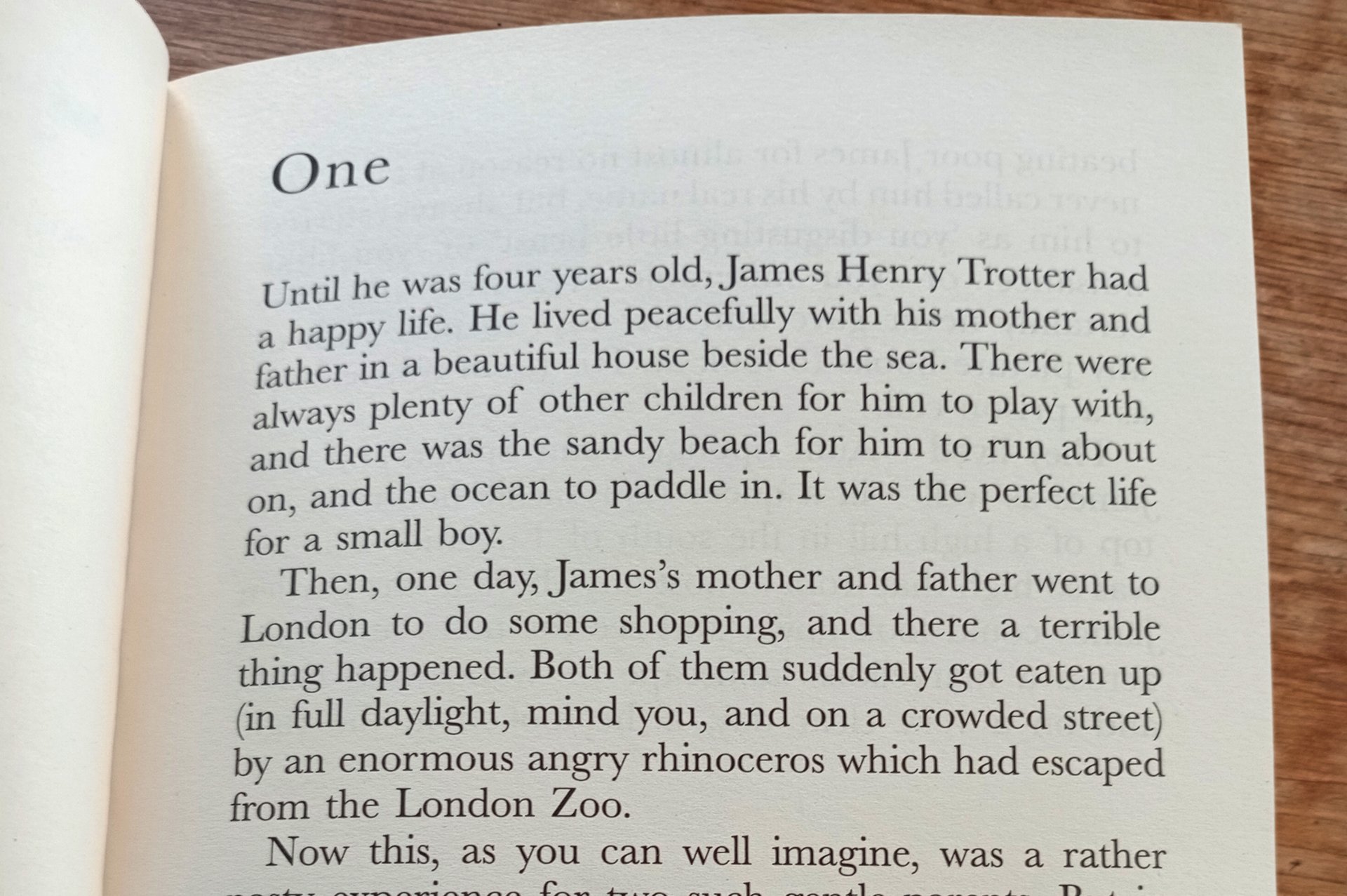Children’s Stories, Charity Stories, and Emotional Punches
What is it about children’s stories and the darkest reaches of human nature?
Before adventuring in his giant peach, four-year-old James loses both loving parents to a violent rhinoceros. He’s then sent to live with cruel Aunts who call him names, beat him, deprive him of toys and force him to live in a room as bare as a prison cell.
And that’s by the end of page 2 (written in big font and including a picture).
In family favourite box office smash Matilda, selfish and resentful parents ignore their young daughter, rip up her books and send her to a school run by fearsome sadist Miss Trunchbull (speciality: lifting up children by their ears or hair and hurling them across the playground).
And it’s not just Roald Dahl.
Grimm’s fairy tales tend to live up to their name. Jack smashes his skull falling down a hill, blind mice are hacked to death with carving knives, and a shoe-dwelling woman routinely whips her children before bed. And don’t let’s get started on the everyday brutality of Tom & Jerry and the Looney Tunes crew.
From our earliest years, we turn to stories for escape. But the worlds we escape to aren’t blissful, peace-filled paradises. They’re often violent, troubled places we’re glad to visit only in our imaginations.
In adulthood, we continue to nurture these urges with a passion for horror movies, crime thrillers and psychological dramas. The current top five shows on Netflix comprise a Korean survival thriller, a retro sci-fi horror, a supernatural dark comedy, a true story about a serial killer and a crime thriller.
But tumultuous stories have their conclusions. There’s often a moral thread that winds up with good prevailing over evil. And even when it's more complicated, say in Breaking Bad, the viewer is invited to make their own moral judgements.
The stories we tell for charities and purpose-led projects engage our moral consciences too. But they’re not fictional. They’re less an escape from the real world and more a reminder of real-world issues that need addressing. However, the principles of engagement remain the same.
What all good storytelling has in common is jeopardy and conflict. These are the bits that capture our attention, engage us emotionally, and invite us to get involved. And in charity storytelling, these can be the most moving elements.
A mother telling her children that her cancer is inoperable. A family fleeing violence deprived of the chance to build a new life. A child experiencing the physical hunger and social shame of poverty at school lunchtime.
These are the moments that connect. The moments that trigger feelings of shock, sadness, anger. And then hope. A desire to help put things right.
So whether it’s your eight-year-old daughter rooting for Matilda to prevail over Miss Trunchbull. Or someone you know giving time or money to support people through a situation beyond their control. Stories matter.
They’re what connect us emotionally and put us in touch with our beliefs about the world.

